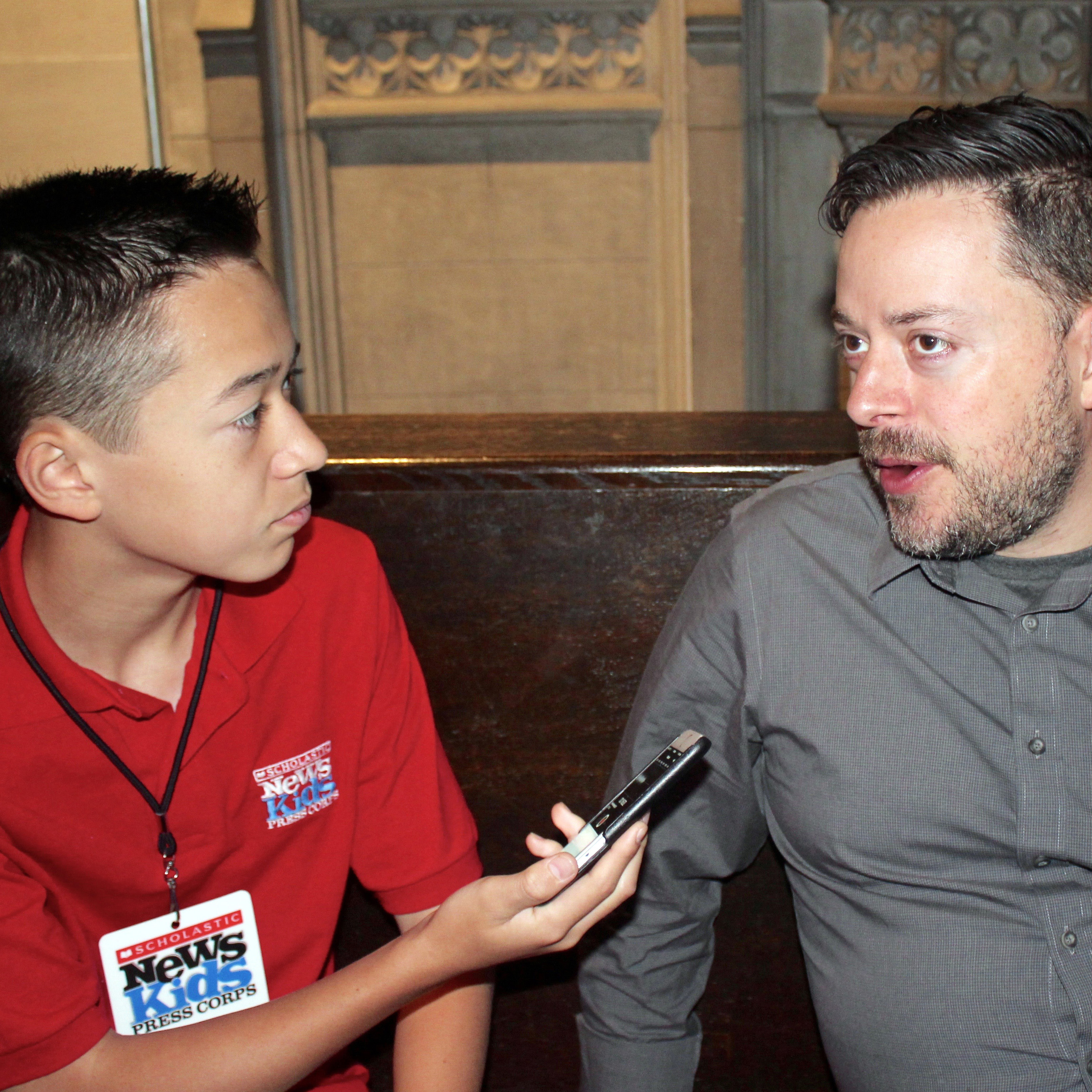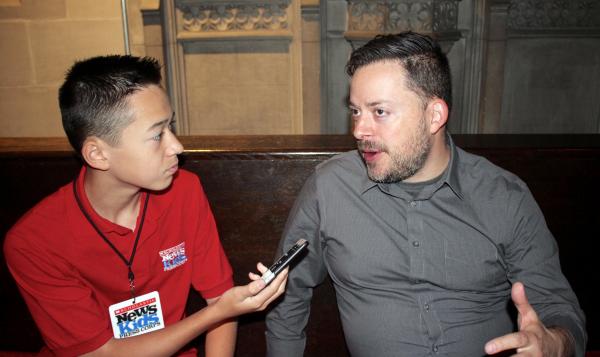KID REPORTERS’ NOTEBOOK
Putting Peace First


Maxwell talks with Eric Dawson at the Boston Book Festival in Massachusetts.
“I believe that the 1.6 billion young people on our planet represent our biggest hope for making the world a better place, but no one is calling on them,” says Eric Dawson, chief executive officer of Peace First.
Dawson co-founded the nonprofit organization when he was 18. For the past 26 years, he has been working with young peacemakers around the country. Peace First provides resources for young people to create projects that will make a difference.
“I believe that youth can change the world because I see it every day,” Dawson said. I met him last month at the Boston Book Festival in Massachusetts, where he was speaking on an author panel. He had just published Putting Peace First: 7 Commitments to Change the World (Viking Books for Young Readers).
In the book, which is geared for middle-grade readers, Dawson introduces young peacemakers and tells how they achieved their goals. Here are highlights from our conversation:
What inspired you to write Putting Peace First?
Someone told me to write the book that I would want to read. I thought about myself when I was a kid—kind of angry and frustrated with the world because it felt unfair and unjust, and I felt like I couldn’t do anything. I wanted to write this book as a love letter to young people everywhere who are curious, frustrated, angry, and inspired to make the world a better place but don’t know where to start.
What is the message of your book?
I have three messages for young people: 1) Who you are is as important as what you do. 2) You can make a difference now. You don’t have to wait for a magical day when you are old enough or smart enough or have learned enough. 3) You have to do something. We can’t wait—and you can’t wait—because the world needs you.
What are your earliest memories of being a changemaker?
I don’t remember this, but my mother told me the story. When I was 8 years old, I spent the day designing utopian communities—what the perfect world would looks like. I think that most young kids would draw trees and parks. I was designing economic systems, health care systems, and job training programs. Apparently, at a young age, I was deeply curious about the way the world works and how to make it better.
How do you practice and teach peace and kindness within your own family?
Young people are incredibly smart, and they pick up the differences between what adults say and how they act. The most important thing that I try to do is be a peacemaker with my wife and children. When I fall short, which we all do, I apologize and model that being a peacemaker is not about being perfect. It’s about trying your best again and again.
Who are your peacemaking heroes?
I’m inspired every day by young people who are doing really cool, interesting projects. The ones that are the most inspiring are kids taking a single step. There was a young woman from New York City. Her project was that she would scan the cafeteria every day, find the kid who was sitting by himself, and sit next to him. I love the simplicity, the commitment, and the compassion.
What does it mean to be a good citizen?
So often we start with the question, “What do I get out of it?” Many of us can move to the place of “What am I willing to give?” But we really need to get to the place of “What am I willing to give up?”
What it means to be a citizen is giving things up for the greater good. Sometimes it means that we have to make our lives a little less nice so that other people can have more opportunity.
